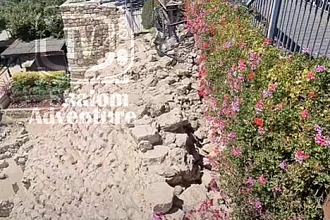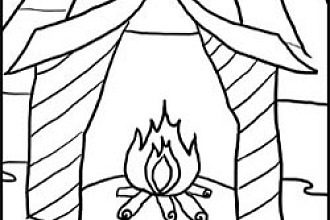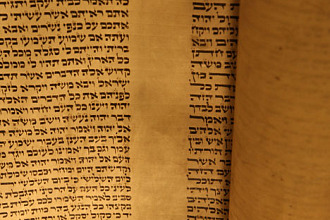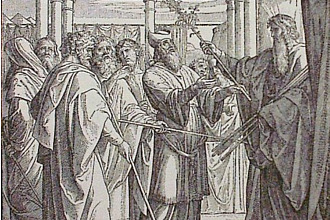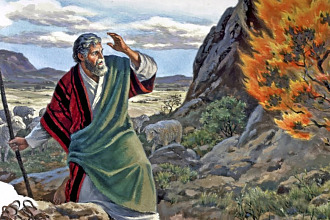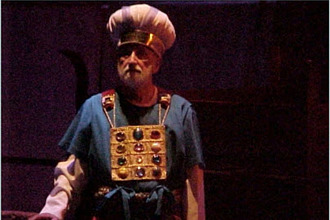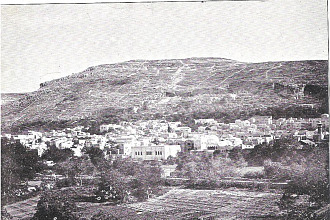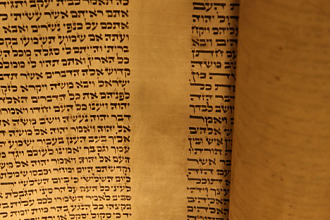Parasha for the Week: Tazriah: Leviticus 12:1 – 13:59
Parasha for the Week: Metsora: Leviticus 14:1 – 15:33
Haftara: 2 Kings 4:42 – 5:19; 7:3 - 20
Brit HaChadasha: Luke 2:21 - 39
Overview Tazriah:
The Torah commands a woman to bring a korban after the birth of a child.
A son is to be circumcised on the eighth day of his life.
The Torah introduces the phenomenon of tzara’at (often translated as leprosy) — a miraculous disease that attacks people, clothing and buildings.
A kohen must be consulted to determine whether a particular mark is tara’at or not.
The kohen isolates the sufferer for a week. If the disease remains unchanged, confinement continues for a second week, after which the kohen decides the person’s status.
The Torah describes the different forms of tzara’at. One whose tzara’at is confirmed wears torn clothing, does not cut his hair, and must alert others that he is ritually impure. He may not have normal contact with people. The phenomenon of tzara’at on clothing is described in detail.
Overview Metsora:
The Torah describes the procedure for a metzora (a person afflicted with tazri’a) upon conclusion of his isolation. This process extends for a week, and involves offerings and immersions in the mikveh. Then, a kohen must pronounce the metzora pure. A metzora of limited financial means may substitute lesser offerings for the more expensive animals.
Before a kohen diagnoses that a house has tzara’at, household possessions are removed to prevent them from also being declared ritually impure. The tzara’at is removed by smashing and rebuilding that section of the house; if it reappears, the entire building must be razed. The Torah details those bodily secretions that render a person spiritually impure, thereby preventing his contact with holy items, and how one regains a state of ritual purity.
Haftara: 2 Kings 4:42 – 5:19; 7:3 - 20
In the text of parashot Tazri’a and Metzora we have the description of “tzara’at”. Even though the Jewish tradition says that it is not leprosy all the symptom of this sickness look like leprosy
TAZRI’A: The old Jewish tradition has seen this parasha in connection with leprosy, that’s why the corresponding text in the Haftara is about Naaman, a Syrian who got leprosy. Naaman, commander of the army of the king of Aram, was a great man and in high favor with his master, because by him the L-RD had given victory to Aram. The man, though a mighty warrior, suffered from leprosy. (2Kings 5:1). This man was highly appreciated, by men and by G-d. In his house was a young Jewish girl who served his wife. This young girl believed with all her heart in the G-d of Israel, she was sure that her master could be healed by G-d and his prophet. There is no discrimination of person for G-d, Jews and Gentiles are loved and receive blessings if they are faithful people. Naaman went to the king of Israel and then to the prophet Elisha. Elisha sent him to the Jordan River to be immersed seven times, then he was healed, “his flesh was restored like the flesh of a young boy, and he was clean. He went back to the prophet and confessed that the G-d of Israel is the true G-d, “Now I know that there is no God in all the earth except in Israel… (2Kings 5:14; 15). Naamam wanted to reward the prophet of G-d, but Elisha refused (2Kings 5:16).
MEZTZORA: Leprous men (2 Kings 7) are ready to accept their fate and to die, but before dying they want to help G-d’s people in their war against the Syrians. “there were four leprous men outside the city gate, who said to one another, “Why should we sit here until we die? If we say, ‘Let us enter the city,’ the famine is in the city, and we shall die there… (2 Kings 7:3-4). People with leprousy were unclean, and considered cursed by the L-rd. But the story of this Haftara shows us a complete different perception of leprous. “the L-rd had caused the Aramean army to hear the sound of chariots, and of horses, the sound of a great army, so that they said to one another, “The king of Israel has hired the kings of the Hittites and of Egypt to fight us.” They fled away and abandoned their tents, their horses, and their donkeys leaving the camp just as it was, and fled for their lives (2 Kings 7:6-7). The four leprous men decided since they were going to die no matter what they did, they might as well surrender to the enemy. When they arrived in the camp they were shocked to find it abandoned. After eating and drinking to their content, they felt guilty about not sharing it with the rest of the people so they went to the king of Israel. The army “went after the Arameans as far as the Jordan; the whole way was littered with garments and equipment that they had thrown away in their haste.” (2 Kings 7:15). Israel was saved. It is a great lesson for us, how many times we have some prejudices against some people, thinking that in their condition they can be blessed or even be a blessing for anyone. But the Lord like to surprise us and to take some special ways we have not thought before.
Brit HaChadasha: Luke 2:21 - 39
Our Parasha Tazriah, commands to circumcise every boy at the age of eight days. “On the eighth day the boy is to be circumcised.” (Lev 12:3) and after forty days of purification there is another ceremony: the presentation of the boy to the Almighty “‘When the days of her purification for a son or daughter are over, she is to bring to the priest at the entrance to the Tent of Meeting a year-old lamb for a burnt offering and a young pigeon or a dove for a sin offering.” (Lev 12 6). We have to remember that Yeshua was born as a Jew and lived a Jewish life. That is why his parents who were orthodox Jews fulfilled these obligations of the Torah, and even if they were living in Nazareth and Yeshua was born in Bethlehem, they wanted to perform their religious duty in the Temple of Jerusalem.
It is written in the Besorah of Luke “On the eighth day, when it was time to circumcise him, he was named Yeshua, the name the angel had given him before he had been conceived.” (Luke 2:21) Again after Myriam’s purification it is written “When the time of their purification according to the Law of Moses had been completed, Joseph and Mary took him to Jerusalem to present him to the Lord” (Luke 2:22). Circumcision and presentation of a baby have always been important moments in a Jewish family. But it was much more important for Yeshua, because when they were in Yerushalayim they met two prophets, the first one called Simeon, who is presented in the Besorah as a Tsadik (a righteous) and someone who was waiting for the Mashiach. When he saw the baby Yeshua he received a vision from the Ruach Hakodesh. He took the baby in his arms and said “Sovereign Lord, as you have promised, you now dismiss your servant in peace. For my eyes have seen your salvation, which you have prepared in the sight of all people, a light for revelation to the Gentiles and for glory to your people Israel.” (Luke 2:28-32). The second prophet was an old lady called Anna, she is presented as a very devout widow who never left the Temple, praying day and night, and it is written that when she saw Myriam, Yoseph and Yeshua “she gave thanks to God and spoke about the child to all who were looking forward to the redemption of Jerusalem.”




